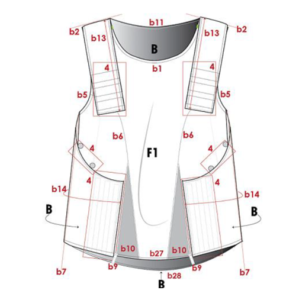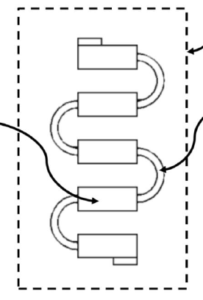An efficient fine aggregate with enhanced pore structure produced from non-expansive clay to optimize internal curing capabilities.
Internal curing concrete provides a number of advantages in the concrete construction industry, the most popular internal curing materials are manufactured and natural lightweight aggregates. Those aggregates are not available in most countries and have various disadvantages in use of internal curing concrete production. Thus, the focus of this research is to develop an effective pore structure for internal curing aggregate using non-expansive clays.
Different clay samples were obtained from local mines in Nachchaduwa, Dankotuwa, Metiagoda, and imported clay from China. Subsequently, clay specimens of equal sizes were prepared using each clay sample and heated at a selected range of temperatures to produce various pore structures within the clay specimens. Afterwards, heated samples were cooled, and crushed, and fine aggregates were produced. Pore size, pore connectivity, pore strength, and the pore expansion of each aggregate were identified through an extensive analysis of the pore structure. Afterwards, the aggregates were categorized based on the properties of the pore structure of each aggregate and internal curing properties of those pore structures.
According to the results and analysis, bolted non-expansive clay materials, which exhibit a 1.1 to 1.5 mean bloating coefficient value, were identified as suitable materials to produce an effective pore structure within heated clay mass. Furthermore, the effective pore structure should contain at least 27% of open porosity and the mean pore radius should exist between 0.3 and 10μm to ensure a higher water absorption property of more than 15% and higher water desorption property of more than 95% at 94 relative humidity within 28 days.
Moreover, the compressive strength of the pore structure should be greater than 3.5N/mm2. The fineness module of crushed fine
aggregate should range from 2.3 to 3.1. It will ensure proper aggerate distribution and an effective internal curing process, which will increase the compressive strength of concrete more than conventional concrete in 28 days and beyond that. Subsequently, the aggregate can increase the workability of concrete. As a result, 15%–23% of water reduction can be done by increasing the compressive strength by 5%-11% more than the conventional Grade 30 concrete.
The aggregate can be used to produce effective internal curing concrete which has higher workability and higher compressive strength. It can replace approximately 27% of the river sand that used to produce concrete. On the other hand, it can save the money that should be spent on the concrete curing process while saving construction time.


